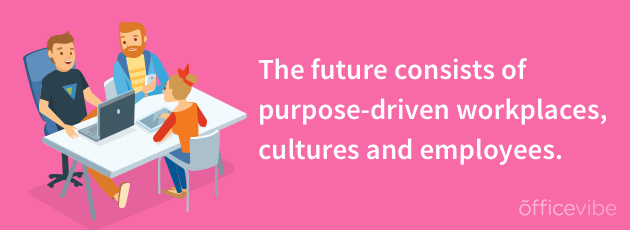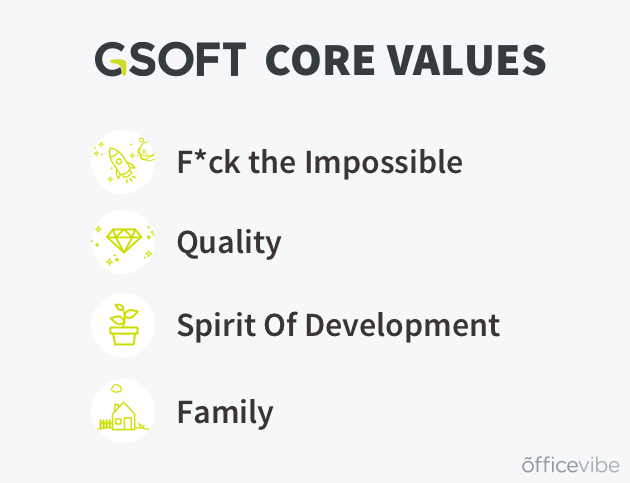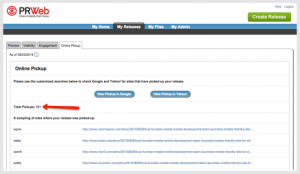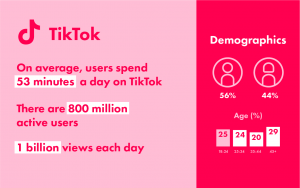— August 13, 2017

Despite the annual review occurring only once a year, its looming presence has lasting, residual effects on employees’ day-to-day mentality. More often than not, it infects the culture of an organization.
It generates a mindset in employees that dictates the way they work, focused on external rather than internal motivators. It’s a mindset founded on the premise of fear, and where fear exists, innovation and growth become stunted.
We sat down with Kahina Ouerdane and Joanna Awogni, the leaders of GSOFT’s Culture and Organization team.
They explain in an interview why our organization has decided to go against the “grade” and cut out the annual review from our feedback cycles, for good.
Where Change Needs To Begin
The issues of the workplace today are very much intertwined with the school system, and I think the first step is to revolutionize education. When you’re young you are interested in learning for the sake of learning, and then at some point in your life you become interested in learning for the sake of getting an A.” – Kahina Ouerdane
There’s a movement from the intrinsic motivation for doing things, to extrinsic motivation, and it is during this shift that purpose and meaning become lost. There’s a pleasure that’s extracted from the process when you know you’re being evaluated, so you do it for the wrong reason.

Tying any sort of learning (in the classroom or the workplace) to grades and rewards removes authenticity from the process. This lack of authenticity stunts creative thinking and innovation, which is such a crucial aspect of company growth and success.
Why We’re Moving Beyond The Grade
“When you stigmatize people with a number, it’s like stigmatizing people with titles. This is another element of the workplace that we will need to one day – boldly – reconsider.” – Kahina Ouerdane
Kahina and Joanna explain that annual reviews are no longer a responsible way to evaluate. There is too much recency bias, it’s inefficient and overly ambitious to think that managers can collect accurate, year-long notes, and moreover it’s demotivating for employees to feel that they “are” the number that’s assigned to them.
When you assign a number value to someone, they become boxed into that number. The way that managers – and then by extension colleagues – interact with them after a grade is given, is a direct result of their perception of what that number means.
“There’s such a strong bias attached to the grade. You won’t get the best out of people when you tell them they’re a three on five. People tend to take on the meaning of the label you give them.” – Joanna Awogni
This is why we need to move away from numbers and focus on something perhaps less numerically tangible but more meaningful, and less confining.
Why Can’t Annual Reviews Work In Tandem With Other Feedback Cycles?
We asked Joanna and Kahina what they thought about companies keeping the annual review in place when it worked in tandem with other feedback cycles, like monthly one-on-ones and frequent check-ins:
“If you have all those other feedback cycles and continuous communication, why is the annual review relevant any longer? Why do we need a final review, when learning and growth is continuous? Organizations need to focus less on specific events and failures that accumulate during the course of a year leading up to one big review, and focus more continuously on an employee’s development, as well as their embodiment of the company values.” – Kahina Ouerdane

Much like the process of human evolution, this is the evolution of the workplace. Things become obsolete as we begin to understand what works best, and what doesn’t work at all. The focus now is on putting employees at the center. Committing to the perpetuation of the fear-inducing annual review seems to go against the grain of humanizing the workforce.
The Future Of Management Without Annual Reviews
Ultimately, we’re moving from 2.0 to 3.0 management, meaning away from a command and control environment towards self-organized teams and shared leadership.
“Removing the annual review is consistent with removing control and moving towards more self-sufficient teams. Removing fear will create more empowered and purpose-driven employees.” – Kahina Ouerdane

This allows people to focus on their purpose, rather than on impressing other people for the sake of this final, looming grade. It lets employees see and experience work life beyond the fear factor of this final review. There is much more room for growth, innovation, and creativity when one considers the purpose and the “why” of what they do, rather than the consequences of it.
“The presence of fear derived from these evaluations inhibits people from being their true selves, their creative selves. It goes hand in hand with fear and that’s what doesn’t work about the annual review. They embody control and hierarchy. It’s about ‘power over’ rather than ‘power with’.” – Kahina Ouerdane
The future of work is less oriented on counting failures, and more focused on encouraging risks and embracing mistakes whose genesis was from an intellectual curiosity to test and explore.
Why Companies Still Hold On To The Annual Review
The movement away from this feedback process, which has been embedded in many organizations for decades, requires a lot of reflection. It’s tough to break free from habits – especially since there’s something clean and simple about being able to tie up the whole year in a bow with a final review. Even if companies understand that the process is broken, the process of change is too heavy for many organizations to implement without clear directions for replacement.
“Alternatives exist, but companies haven’t been curious enough to go and look for them. It requires a lot of thinking, reorganizing, and reconceptualizing of values. It’s not an easy task but it’s the direction of the future, and it will pay off in the long run.” – Joanna Awogni
Change is scary, but sometimes the pangs of an initial discomfort are worth it, if not necessary. It doesn’t matter if you are a small start-up or a 50-year-old enterprise. If you want to survive as an organization and meet the needs of top candidates and the most forward-thinking talent available, it’s time to start thinking about putting the wheels of change into motion.
What Employees Really Want
“What always comes up is the topic of feedback. Employees want constant communication, more one-on-ones. They want to learn and develop, constantly. How can this drive be reduced to one conversation and a final number at the end of the year?” – Joanna Awogni
It’s inherently counter-intuitive as the direction of growth is forward, and the annual review is tied heavily to the past (or whatever version of it is at top of mind come the time of the annual review).
Getting rid of the “grade” is necessary for any successful learning environment, and what employees care about more than pay, or benefits is the opportunity learn and grow.
The first step to accomplish this is constant communication, and the opportunity for year-long feedback, not once a year feedback. It’s too late by then.
There is no end to learning so “ending” the year with an annual review follows a start-stop movement, instead of a continuous, circular one.
The “Evaluation” Language We Need To Stop Using, Right Now
With the change of processes, we also need to change the language we use surrounding these processes. Words are full of meaning, connotation, and power, so organizations must consider the ones they use carefully – it will shape the culture of your company, as well as the energy and tone, and therefore how employees perform within it.
“When we change our way of thinking about something, we need to change the way we speak about it too. We need to stop thinking about ‘evaluating’ one’s performance, and instead, start ‘appreciating’ one’s performance. At GSOFT, our understanding of performance is completely tied to our core values.” – Kahina Ouerdane
Kahina and Joanna explain that words of ‘winning over’ and ‘power over’ rather than ‘winning with’ and ‘power with’ are detrimental to teams.

“It’s not by “winning” that we are going to create a whole better than the sum of its parts. It’s about abundance. In Law school, our grades were dependant on the grades of others, so people would hide books in the ceilings of the library to prevent others from learning the right answer, in order to increase our own grades. But how does that serve anyone?” – Kahina Ouerdane
How To Change Your Language
Challenge-Discussion: Instead of “I want to challenge you on this,” which is not only confrontational, but it divides people, try using more approachable and inclusive language like “Let’s discuss this a bit more”
Collaboration-Co-Creation: When you really dissect the meaning of the word collaboration, it doesn’t necessarily promote togetherness. Collaborating on a project can mean that I sit in my corner and write a book while you sit in your corner and illustrate it – then we merge them together. Co-creation implies really working together on something
Evaluation-Appreciation: The word evaluation is probably one of the most loathed words in the English language, so let’s change the way we approach performance. Replace evaluation with appreciation, a more positive, yet still powerful word.
The Solution: Tie Performance To Values, Not Numbers
The first step is to define your company’s core values. Know them. Mean them. Live them and breathe them. Share them with your teams often.
“Our values are core to everything that we do, and it’s visible in our day-to-day, the products that we develop, the events we organize and the way that we recruit. They are also at the center of each employee’s development.” – Kahina Ourderane

Individual grades and your own performance are not what is most pertinent in the workplace. What matters most is the team, and a collective movement toward common and shared goals based on a value system.
Implementing Our Solution
Values will be broken down into different criteria on what we call a “Heat Map,” which is what will be used every 3 months in between the regular monthly one-on-ones to check in on employees’ development. The subsequent one-on-ones will follow up on the progress.
For example…
Criteria of the “Family” value:
- Co-creation
- Vulnerability
- Community
- Care for others
Use Colours Instead Of Numbers:
- Green- Strength to keep up!
- Yellow-Element to start working on over the term
- Blue- Element to work on now, as it is not yet a strength
No one is stuck with a number. Instead, colours are used to represent an employee’s state of development with regards to the value set.
“The goal of this is to focus on potential beyond “what did you do in the past?” to “what can you do in the future?” – Joanna Awongi
This new method will inspire employees to continuously look at the greater purpose and the WHY they do what they do. It will focus on constant development, which lets employees know that there is always room for growth.
What’s Next?
Once we test out our new method, we will share our insights, feedback and templates with you in a follow-up post. Stay tuned!
Key Takeaways
- Assigning grades to learning kills creativity by making motivators external, not internal.
- The fear that the annual review brings to the workplace inhibits innovation.
- Feedback needs to occur all year-long, not only once a year.
- Employees need constant communication in order to learn and grow.
- We need to be more mindful of our words and avoid using confrontational language.
- Matching employee’s performance to a number keeps affects the way they are perceived *by themselves and their managers), and therefore treated.
- Performance should be tied to values, to keep everyone moving collectively towards a common goal.
Feel free to reach out with any questions and comments!
Business & Finance Articles on Business 2 Community
(79)







